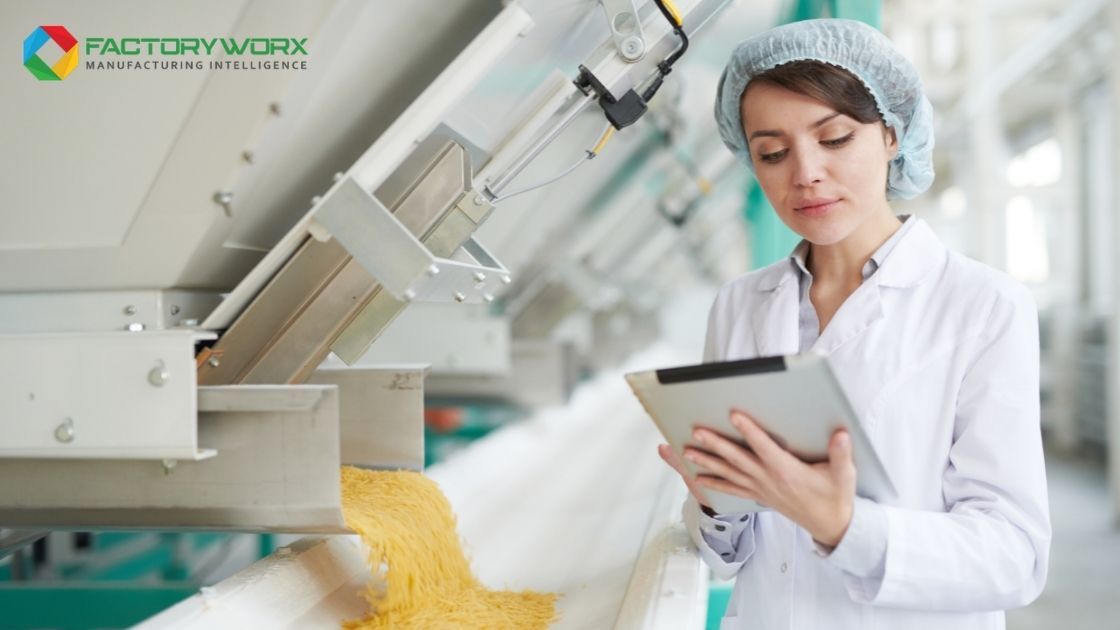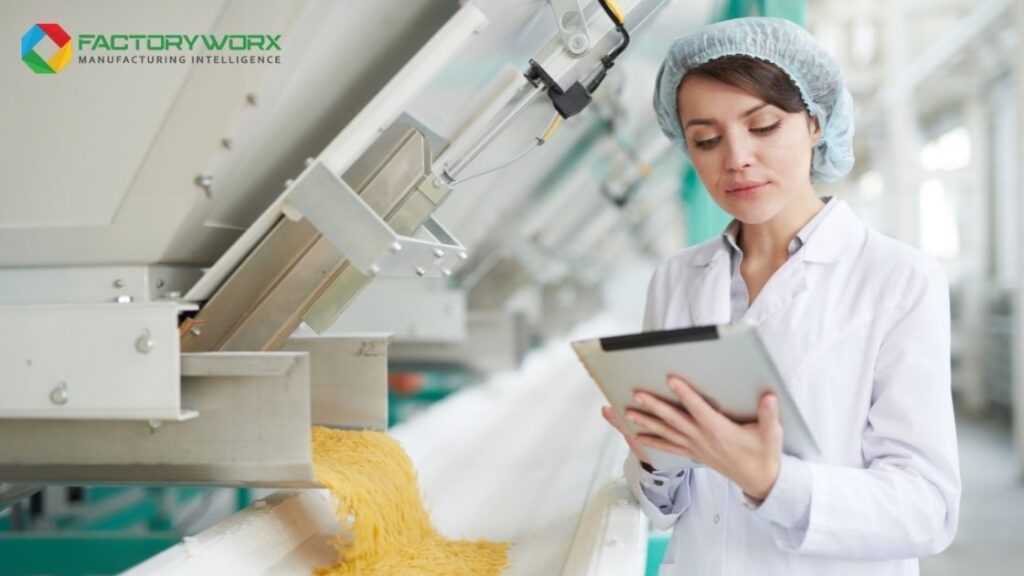
- May 19, 2022
- admin
- 0
Read Our Blog

How does OEE Help in the Food Manufacturing Industry?
Overall Equipment Effectiveness (OEE) is the go-to metric for food manufacturing facilities to recognise losses and benchmarking advancement toward improving throughput performance. It's used to figure out what percentage of manufacturing time is productive.
Measuring overall equipment effectiveness (OEE) has various advantages in a food manufacturing facility. OEE allows you to improve production line availability, performance, and quality by adding sensors to track run time, downtime, and cycle times. This article explains the importance of MES solutions for manufacturers and why OEE is critical in the food industry.
Why OEE Is Critical for Food Industry
Paper-based methods add time, errors, risk, and inefficiency to your business regarding production and quality compliance. It can be revolutionary for your organisation to replace them with a user-friendly, cloud OEE.
OEE in the Food industry can be used to improve performance and collaboration. You get real-time indicators like plan achievement and units per person-hour to help you establish a culture of continuous improvement with complete visibility in all the essential processes.
To begin with, it is an essential statistic for increasing profits. By comparing actual data to your schedule, you may assess your equipment's effectiveness, discover any recurring issues, and develop strategies to improve your manufacturing operations.
Also, it is an excellent motivator. Tracking OEE gives management and floor staff goals to strive for and a reason to rejoice when realised productivity gains.
Finally, it is significant across the manufacturing industry. OEE is a global tool for assessing production efficiency and finding potential improvement areas. As a result, having a good OEE score is recognised throughout the business.
OEE in food industry: Four Benefits
Tracking critical performance metrics
Manufacturers face a massive challenge in tracking only a few KPIs using manual techniques. You can monitor where performance is excelling, lagging, or simply maintaining stability by using OEE software. But for the plant with various lines and the requirement to get insight at the batch level, point solutions will fail badly. Companies should include these scenarios in an OEE for the food business. You should customize the KPIs to track your individual needs, goals, and business plan.
OEE software allows you to regularly track several KPIs by collecting and analysing data from your sensors. OEE can even be used as a KPI, providing a comprehensive picture of a plant's efficiency by combining quality, performance, and availability indicators into a single formula, especially when comparing multiple facilities.
Adjusting in real-time
Food manufacturers have particular challenges. When there are roadblocks, you can't always modify materials, and factors like expiry dates make fast responses even more critical. Real-time views of a line are thus required for rapid corrective actions on current batches. It also lowers the likelihood of a massive raw material dump.
The food industry benefits from OEE software because it not only provides you with the data you need to make better decisions but it can also alert you to issues that are occurring in real-time. You can respond quickly and minimise the impact they have on your production. The end benefits are:
- More quality-driven processes.
- Lower rework.
- More on-time shipments.
- Higher customer satisfaction.
Increasing equipment performance
OEE software can assist you in identifying any obstacle in your process, such as equipment breakdowns and increasing overall plant performance. With a direct line of sight into sensor information, you may notice inefficiencies caused by machines or component malfunctions, generating downstream problems and significantly influencing line performance. Data-driven downtime planning is far more efficient than unscheduled downtime due to equipment breakdown. OEE data in graphs and charts can help in this task.
Improving continuously & instilling constructive competition
Finally, OEE software assists food manufacturers in making constant improvements. Here are some benefits that organisations have seen in their plants as a result of using OEE data:
- Improved productivity: OEE software helps you make accurate adjustments to your staff and machines' performance by providing insights into patterns across shifts, lines, and equipment.
- Better quality: Address quality issues by identifying issues that may result in rework or non-conforming material.
- Enhanced throughput: Use the reporting tools of OEE software to identify and address process interruptions. Utilise your findings to remove time-consuming or wasteful tasks and increase productivity.
- Higher yield: Use the root cause analysis and alerts in OEE software to delve further into yield-related issues.
- Reduced costs: Reduce your plant's overall costs by improving performance, reducing waste and rework, and speeding up production.
- Healthy competition: Our natural desire to compete and outperform drives better continual growth. You can compare a percentage improvement to a baseline or compare facilities.
Importance of MES solution for food industry
Keeping up with the latest technology isn't high on the priority list for many food manufacturers, especially mid-sized businesses with limited resources. The prospect of incorporating technology into their business appears not only costly but also overwhelming. Taking that big, scary step, on the other hand, can make everything more straightforward in the long run.
A fit-for-purpose manufacturing execution system (MES) could help food businesses move their company culture toward continuous improvement and action.
Integrating MES technology into your business's operations should be handled appropriately. Price, compliance, and the learning curve that any technology installation requires are common concerns. The goal is for all staff to finally be able to assimilate and feel qualified without feeling overwhelmed. An MES system can be a positive development for businesses of all sizes.
The advantages of MES in the food business
In terms of productivity and profitability, the advantages of MES software in the food industry are significant. Here are a few examples:
- By recording all transactions, items, orders, and operational data, MES ensures continuous traceability.
- It shows real-time production status to enable ongoing improvement.
- It assists in quality improvement by identifying faults and errors.
- It increases cost savings by reducing rework, scrap, and waste.
- It increases the life of the equipment and improves efficiency.
FactoryWorx MES Platform Solutions help manufacturing organisations' growth strategies in today's global competitive climate. Their innovative MES software seamlessly integrates all internal manufacturing operations, ERP, teams, and digital and physical processes through sophisticated traceability and transportation components with the whole value chain.
Factory Worx MES provides the most comprehensive MES solution available. You will be able to integrate all areas of the manufacturing process and product-related logistics using over 30 modules. Advanced strategic MES modules, such as Factory Worx Team Management, set Factory Worx MES apart from its competition.
There are many reasons why focusing on OEE for food manufacturing will enhance your operation. OEE is the most effective strategy to keep your production operations on track. It examines your production and output quality in real-time while speeding up fault detection and rectification procedures.

